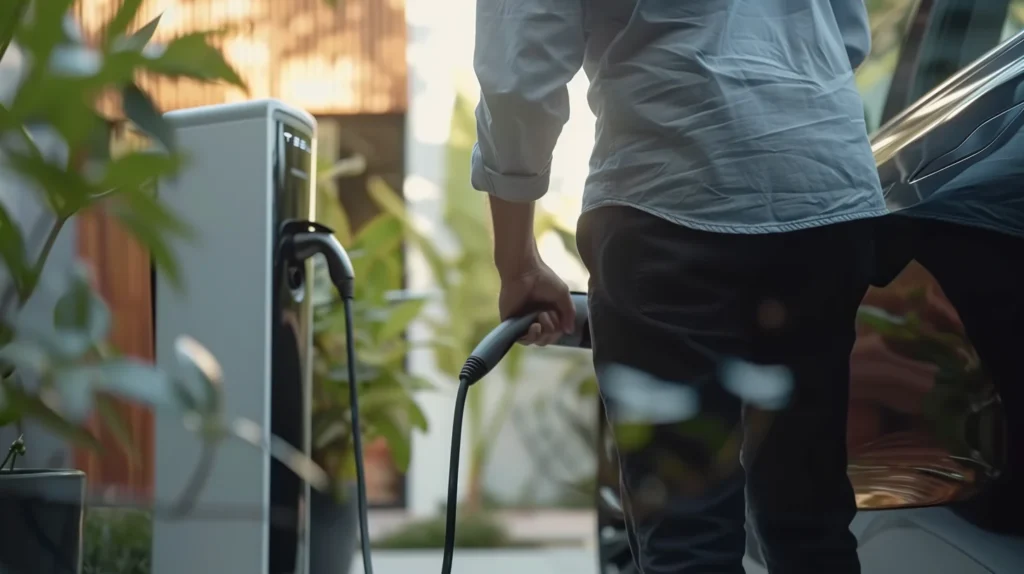Electric vehicles (EVs) are already changing transportation. They’ve enabled companies to lower emissions, meet ESG targets, and upgrade fleets. But in 2025, something else is happening, quietly—but importantly.
EVs are becoming content. And that content is taking shape as a strategic tool for B2B engagement.
The next frontier for emboldened enterprises will not only be about clean energy or efficient logistics. It will be about transforming the EV transition into a living narrative—empowered to share with investors, regulators, partners, and future clients.
EV Content as Corporate Communication
EV fleets are tangible, moving examples of commitment to ESG. For B2B audiences—where trust lives and dies—an EV-powered operation is worth far more than a thousand slides. It demonstrates a match between values and actions.
Think about a supplier making a choice between 2 logistics partners. One has a slide about sustainability. The other has 40 EVs quietly executing real-time routes in front of them, with carbon tracking dashboards front-and-center. Who do they trust?
B2B buyers—especially in procurement, public sector, and global logistics—now require environmental disclosure as part of their due diligence. Elevating EV data to proposals, RFQs, and stakeholder decks transforms mobility into a marketable proof point.
Insight: The most compelling B2B pitch in 2025 might not be a case study, it may be your electric truck quietly roll up to a client’s HQ.

Content Formats: Turning EV Operations into B2B Media
- Short-Form VideoMaking reels of factory floor to fleet, “day in the life” of electric operations, or time-lapse delivery footage give investors and partners a humanized visual sense of what your transition looks like.
- Interactive DashboardsMore and more firms are using live data dashboards with their EV fleet performance (mileage, carbon savings, cost efficiency) in quarterly ESG reporting or investor portals. Engagement tools, not just analytics.
- Thought Leadership SeriesShowcasing your EV strategy in a LinkedIn article, blog series, or white paper does more than show leadership—it invites collaboration. Partners and prospects see your vision and may seek to co-develop initiatives.
- EV Tours & Virtual WalkthroughsDigital or physical tours of your EV-enabled facilities can turn into high-converting onboarding tools. B2B clients want visibility before commitment—and EV infrastructure gives a powerful first impression.
Case Examples: Who’s Doing This Right?
Maersk rolled out electric delivery trucks throughout North America. However, when Maersk shifted it was not only a logistical transition, but also a communicative one. They created a dedicated content hub for sharing sustainability content, video, photos from the road, and customer impacting stories. The result: partner loyalty and supplier trust.
Unilever built EVs into brand content for retail partners, as part of their Clean Future roadmap. Co-branded delivery vehicles were equipped with climate messaging and QR codes linking to ESG campaigns. They turned delivery vehicles into mobile engagement channels for B2B retail partners.
In one example of an industry partnership, BYD supplied DHL with electric vans in different locations. More than just enabling efficiencies, DHL used the partnership to signal modernization in their partner investor briefings and supply chain continuity risk audits. While BYD and DHL created branded video content of EV’s loading packages, they were able to create a quiet departmental, smart messaging blitz, maximizing its B2B value.

Why This Matters: The B2B Trust Equation Is Changing
Historically, B2B engagement focused on efficiency, scale, and price. In 2025, new variables matter:
- Transparency (How visible is your ESG execution?)
- Reputation (Do you act, or just promise?)
- Innovation (Are you ahead of the curve or catching up?)
- Sustainability Integration (Is ESG embedded or siloed?)
Electric vehicles help answer all four—and turn them into communication assets.
Moreover, Gen Z buyers and decision-makers are entering B2B roles. They’re more responsive to real-time proof, visual storytelling, and ethical alignment. EV content meets all three.
Strategic Framework: Activating EV Content for B2B Growth
To convert EV initiatives into scalable B2B media:
- Audit Your EV TouchpointsUnderstand where your evs operate: last mile, corporate fleet, events. Each touchpoint is a story opportunity.
- Data VisualsInvest in turning EV data (i.e. CO2 saved, energy used, etc.) into infographics, or live report via dashboard.
- “Sustainability Studio”Establish a small internal or agency managed team to turn EV milestones, campaigns, and activations, into B2B content.
- Build Messaging Consistency Across TeamsMake sure sales, investor relations, marketing, and operations teams publish similar EV stories. This builds trust and consistency for all stakeholders when communicating.
From ESG Reporting to Strategic Differentiation
The best? EV content can work for multiple stakeholder types:
- Investors see value alignment over the long-term
- Clients feel ethically trustworthy and operationally modern
- Regulators see compliance in real-time
- Partners see co-branding opportunities
- Employees feel cultural and innovation alignment
What starts as a carbon savings report ends up as a competitive story.
EV Content Is the New Competitive Asset
In the B2B space, content is far more than a lead magnet, it’s a reputation machine. And in 2025, electric vehicles are the most underutilized source of credible, strategic, future-facing content.
At Beritarian, we think of EV adoption as more than responsible, we believe it’s communicative. It shows who you are, what you care about, and how seriously you’re building the future.
Past carbon neutral to narrative positive, and in B2B, that makes all the difference.
🚀 Transform Your EV Strategy Into a Communication Powerhouse
📞 Book your EV content consultation and turn sustainability into your competitive edge.





